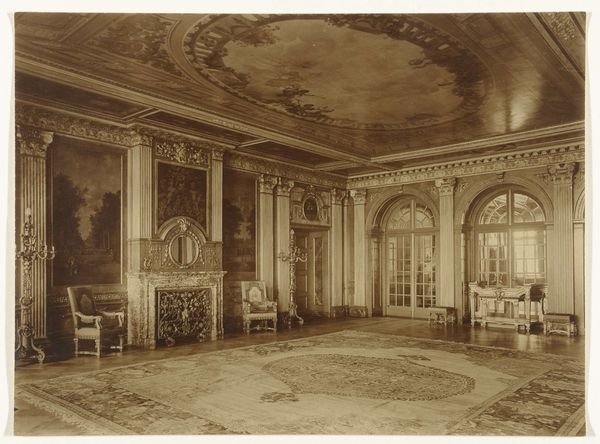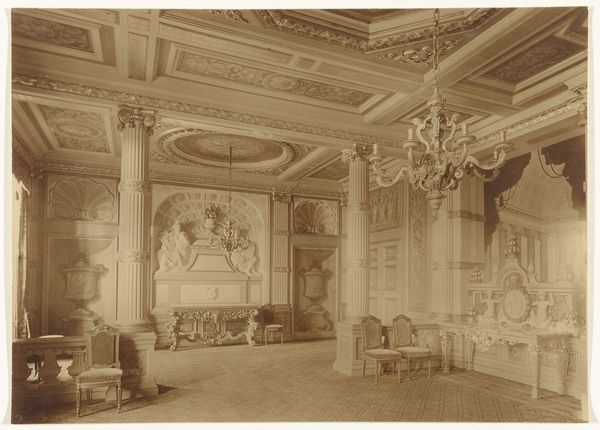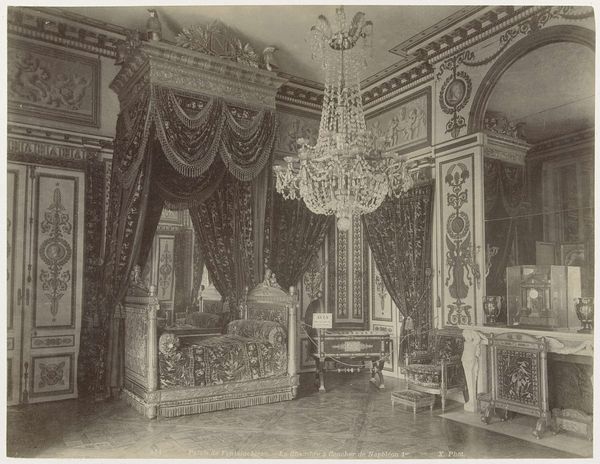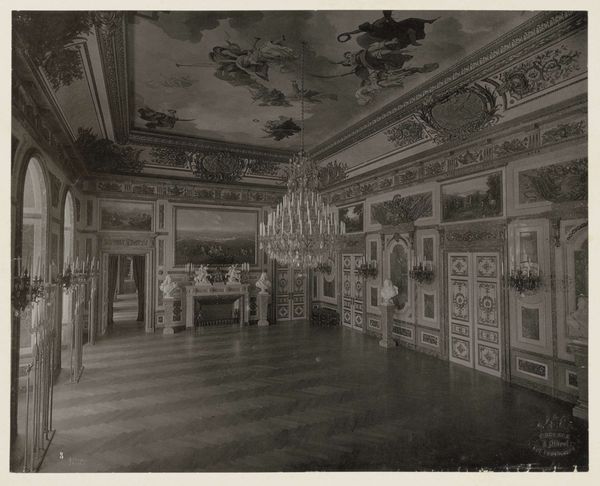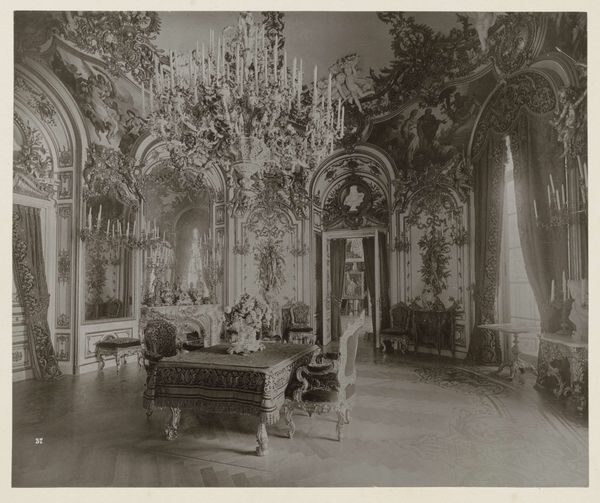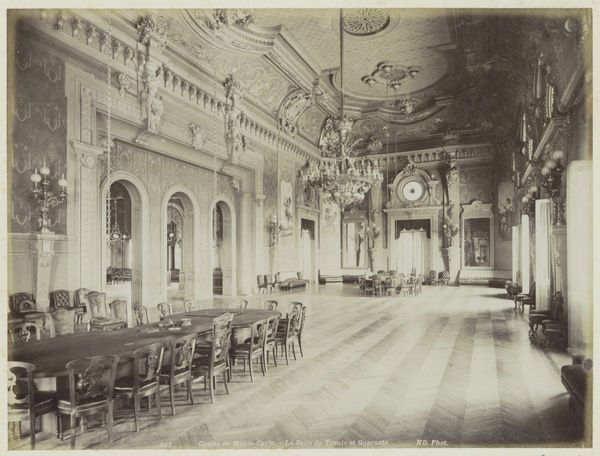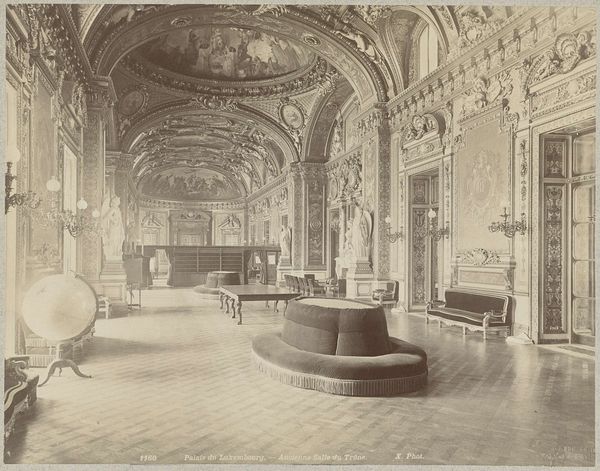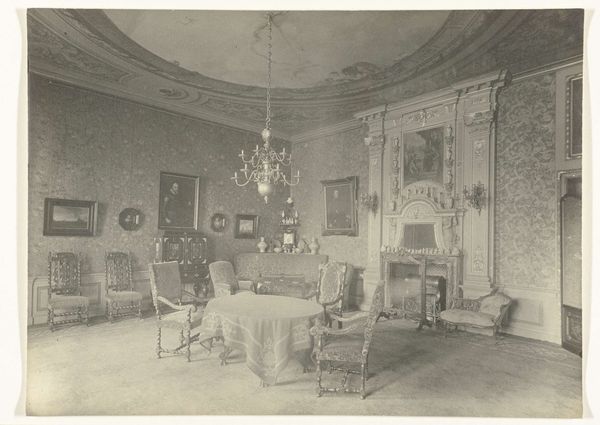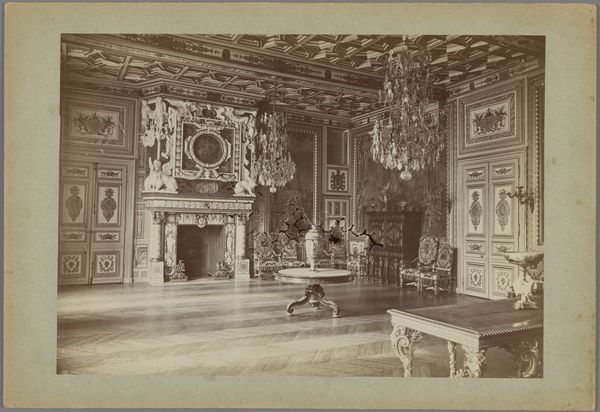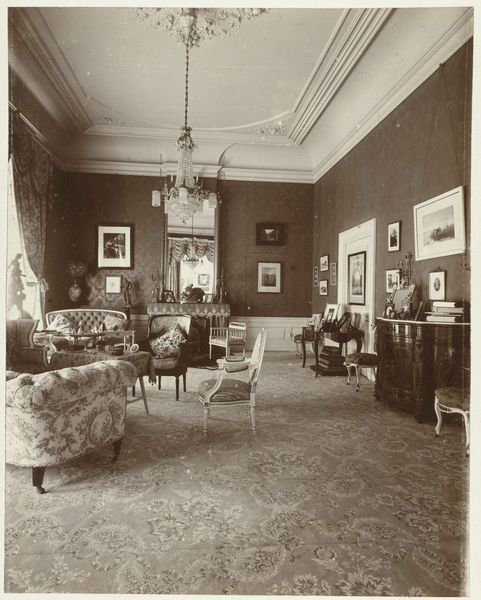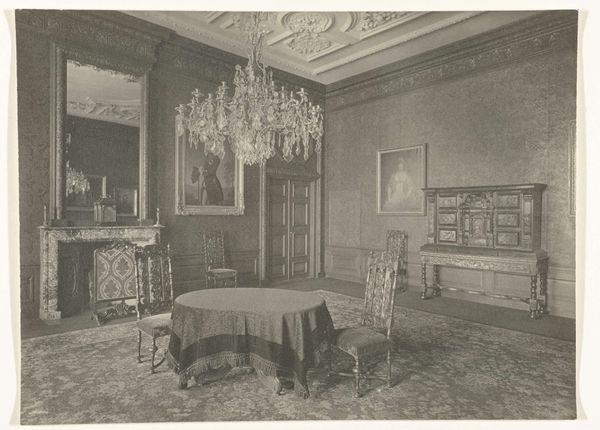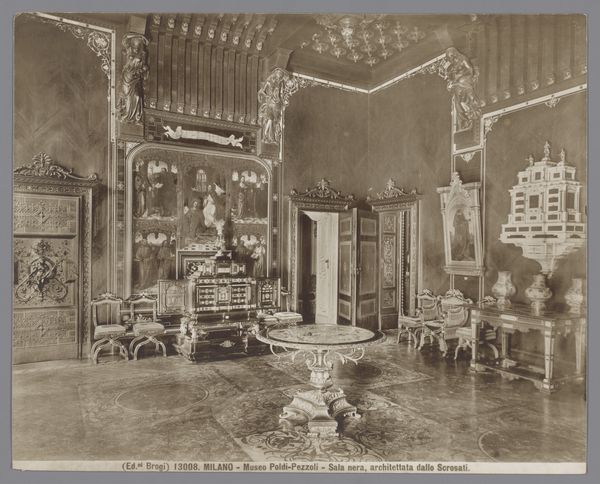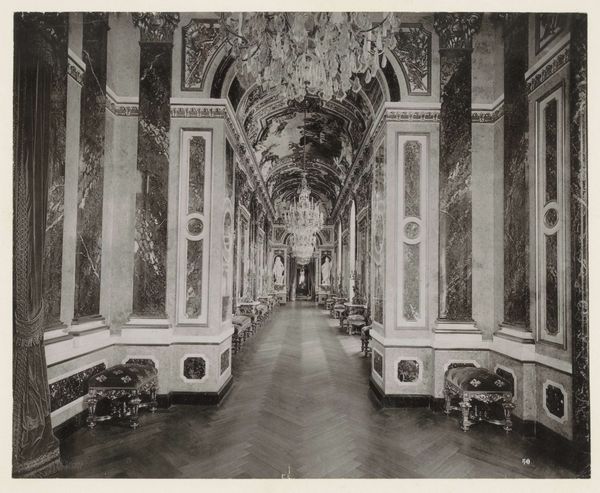
photography
#
landscape
#
photography
#
cityscape
Dimensions: height 167 mm, width 227 mm
Copyright: Rijks Museum: Open Domain
Editor: So, this photograph is by Richard Tepe, taken sometime between 1900 and 1930. It's titled "Gezicht in de vestibule van Paleis Het Loo in Apeldoorn" – which is, "View of the Vestibule of Het Loo Palace in Apeldoorn." What strikes me is this quiet stillness – the perfectly placed furniture, the light… It feels staged, somehow. What do you see in this image? Curator: I see a potent staging of power and tradition. This vestibule is not just a room; it’s a symbolic representation of the Dutch monarchy and its connection to its history. Note the landscapes flanking the room—painted tapestries meant to evoke connection with the land itself, dominion. Editor: So the imagery here reinforces a sense of royal authority? Curator: Precisely. Consider the careful placement of the rug, leading your eye, directing movement. Think about the cultural memory embedded in architectural features. Palaces are often built on previous structures, incorporating older styles, carrying symbolic weight through time. What do the ornate details suggest to you? Editor: I guess it projects this feeling of timelessness, of a legacy that's carefully maintained. It's interesting to consider how photography itself contributes to that—capturing and preserving a specific vision. Curator: Indeed, photography here is an act of preservation but also perpetuation, creating a carefully chosen legacy for the future. These carefully staged images create their own narrative about national identity. Editor: I hadn't thought about it that way – that the image itself is shaping how we understand the monarchy’s legacy. Curator: Visual symbols carry an enormous weight. And Tepe, through this photograph, plays a key role in shaping that. It all goes to show, photography is never neutral; it’s steeped in symbolic choices and meaning. Editor: Right. Thank you, this was very insightful!
Comments
No comments
Be the first to comment and join the conversation on the ultimate creative platform.
